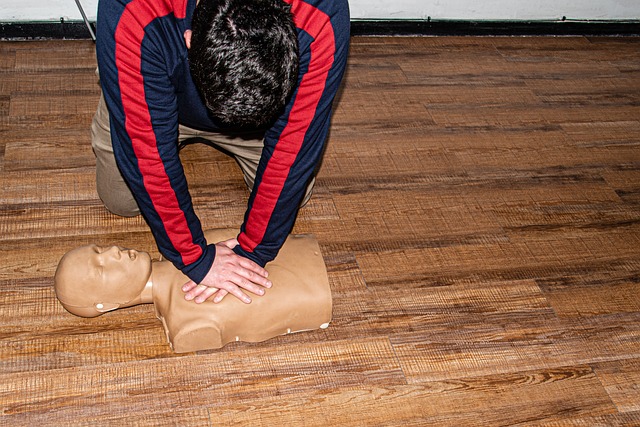When someone collapses, every second counts.
Every second counts more when it is someone who is close to you personally, and you know exactly what to do, whether that’s calling 911 or providing CPR.
But first, you have to be confident, and you need the essential knowledge. To do this, you need to know hand placement in CPR.
Read on to learn more.
Locate the Sternum
Locating the sternum is a crucial step in administering effective CPR. It is essential to locate the sternum to ensure that chest compressions are performed at the proper depth and speed.
To reach the sternum, place the heel of one hand on the person’s chest immediately below the victim’s nipples. The heel should be place on the other hand on top of the first. Make sure that the palms of both hands are overlapping and pointing down towards the person’s chest. This is the correct placement for performing chest compressions.
It is important to ensure that the hands are completely in contact with the patient’s chest throughout the resuscitation attempt. This aids in performing chest compressions accurately.
Interlock Your Fingers
Interlocking the fingers is an essential step in the correct hand position for CPR, something every CPR provider should know. The rescue provider should use their dominant hand to pinch the patient’s skin between their index and middle fingers. Also, use their other hand to interlock their fingers on top of this. This ensures a free flow of blood circulation to the patient’s chest and neck.
The best way to interlock fingers is to cross the pinky of the bottom hand over the index finger of the top hand and tuck the other fingers beneath the index. This ensures optimal compressions while minimizing the risk of injury for both the patient and provider.
Elbows Straight, Shoulders Aligned
When performing CPR, it is essential to focus on hand placement and alignment of the upper body. To ensure effective compression, the elbows must remain straight. When pushing down, the shoulders should be aligned with the person’s chest and be kept as straight as possible.
During chest compressions, wrists should remain bent and run parallel to the person’s chest. This is to ensure that the force from the compression is being correctly applied and to minimize the amount of fatigue felt by the rescuer.
Compression Depth
Depending on the size of the patient, your hands may need to be slightly higher or lower. It is important to press down hard enough to achieve a depth of at least 2 to 2.4 inches of compression. For an adult patient, use the heel of both hands and use only one hand for a child or infant.
For an adult patient, you should do anywhere from 100 to 120 compressions per minute and always keep the compression rate the same. If done correctly, compressions of the correct depth and rate will help restore circulation and restore potential life-saving oxygen to the body.
To confidently perform this, it is necessary to have a certification from a reputable training platform such as MyCPR NOW.
Learn The Basics of Hand Placement in CPR
By understanding basic hand placement and the location of the heart, anyone can use CPR to save a life. Following these steps reduces the chance of complications and increases the odds of saving a life.
Remember that consistency is key! With proper hand placement in CPR, you’ll put your efforts to effective use. Act now – get certified and practice CPR today!
Be sure to explore the other sections of our website for additional captivating and enlightening topics!

